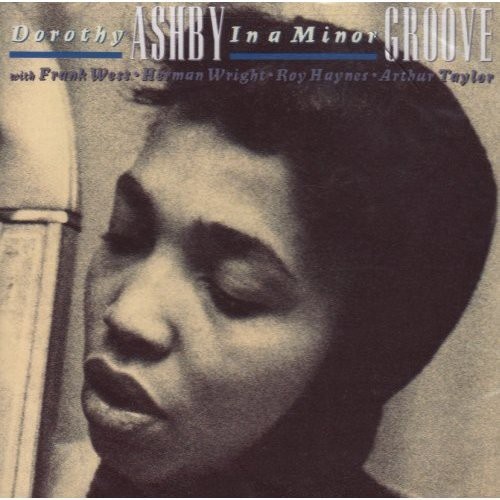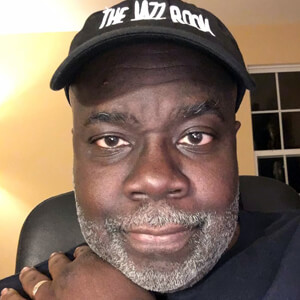Unsung Women of Jazz – Dorothy Ashby
Dorothy Ashby (1932 – 1986)
“This isn’t just a novelty, though that is what you expect. The harp has a clean jazz voice with a resonance and syncopation that turn familiar jazz phrasing inside out.” – Dorothy Ashby
 The harp is not an instrument that easily gives itself over to free swing and quick improvisations. That’s one of the reasons why there have been very few credible jazz harpists. In fact, I can only think of four working today: Lori Andrews, Edmar Castaneda, Deborah Henson-Conant and Brandee Younger.
The harp is not an instrument that easily gives itself over to free swing and quick improvisations. That’s one of the reasons why there have been very few credible jazz harpists. In fact, I can only think of four working today: Lori Andrews, Edmar Castaneda, Deborah Henson-Conant and Brandee Younger.
Dorothy Ashby was a pioneer. She was the first to play credible bebop on the harp. She showed that this unwieldy instrument could actually swing.
She was born Dorothy Jeanne Thompson in Detroit, in 1932. Her father was a jazz guitarist, who would often bring home fellow musicians to jam. Young Dorothy would be a part of some of these sessions, sitting in on piano. She attended Detroit’s famed Cass Technical High School, where her classmates included jazz luminaries Kenny Burrell and Donald Byrd. Her early instruments were the sax and the bass before turning to the harp. She studied piano and music education at Wayne State University.
In 1952, Dorothy set out to make a living on the competitive Detroit jazz scene. She easily could have found work as a pianist, but she made the gutsy decision to concentrate on her beloved harp. The cats in Detroit weren’t too keen on making the harp and its perceived ethereal, effete sound part of a jazz combo. To overcome this resistance, Dorothy organized free shows and played at dances and weddings with her harp-led combo, which included her husband, John Ashby, on drums. Eventually she won doubters over and the gigs and recordings began to come with some regularity.
(“Thou Swell” from – Dorothy Ashby’s The Jazz Harpist)
Her first full jazz LP, The Jazz Harpist, was recorded for Savoy in 1957, with Frank Wess on flute, Eddie Jones and Wendell Marshall on bass and Ed Thigpen on drums. The album was a mix of standards, such as “Thou Swell” and “Stella by Starlight”, and Ms. Ashby’s originals. It was critically well received, but the record buying public ignored it. Her next album Hip Harp, (1958) on Prestige, was one her best, with Wess, Dave Brubeck’s bassist Gene Wright and Art Taylor on drums. In all Dorothy led ten sessions between 1957 and 1970 Atlantic, Cadet and many other labels.
(From Hip Harp, this is “There’s A Small Hotel”)
She was fearless in her musical choices as she played not just bop, but soul, Brazilian, African, Middle Eastern and like her contemporary (and other great jazz harpist) Alice Coltrane, free jazz. Ms. Ashby pioneered the use of the Japanese koto in jazz on her 1970 album The Rubaiyat of Dorothy Ashby, which was somewhat maligned in its time, but has become appreciated as an iconoclastic marriage of soul, world music and free jazz.
(Here’s “The Moving Finger” from The Rubaiyat of Dorothy Ashby)
Music was not Dorothy Ashby’s only love. In the ‘60’s Dorothy and her husband formed a theatrical group in Detroit that produced plays with theme’s relevant to the Motor City’s black community. The group went by several names, the most common being “The Ashby Players”. Many of these productions were musical, with John writing the scripts and Dorothy the music and lyrics, as well as playing harp, piano and leading the musicians. In the late ‘60’s the Ashbys moved to California and continued their theatrical endeavors. Among the actors in their early California troupe was Ernie Hudson, of Ghostbusters fame.
Dorothy also sought work as a harpist in the Los Angeles area recording studios in the early ‘70’s, which was no small feat considering that there were quite a few harpists out there already. However, she had made the acquaintance of singer Bill Withers, who used her on his classic + ‘Justments album. Bill introduced Dorothy to Stevie Wonder, who happened to be working on the sessions that would become Songs in the Key of Life. He had written a tune that was meant to be a duet between himself and a harpist. Stevie had Alice Coltrane in mind, but she was unavailable at the time of the recording session. So instead, he called Dorothy Ashby. Those who don’t know another thing about Ms. Ashby’s music know her unforgettable performance on “If it’s Magic”.
(I had hoped to insert a clip of “If It’s Magic”, but EMI’s corporate blockers made it impossible. You can hear the clip on YouTube. Sorry! – CD)
That performance opened studio doors for Dorothy. Jazz was struggling in the late ‘70’s but Dorothy was very busy, recording with artist such as Earth, Wind and Fire (All ‘n All), The Emotions, Rick James and The Gap Band. Though she would not record another album as a leader, she continued to work steadily until her death from cancer in 1986.
Though Dorothy Ashby is still far from well-known, young musicians with a respect for history such as the aforementioned Brandee Younger are thankfully, doing their part to keep Dorothy Ashby’s legacy alive.
Check out Dorothy Ashby. She may not have been the first, but she was truly an original.
(Brandee Younger Trio performs “Blue Nile”)
Recommended Recordings:
- In a Minor Groove (Prestige) – [A compilation of Hip Harp and In a Minor Groove; Ashby’s two Prestige albums] CD in print
- Afro-Harping (Verve) – CD in print; mp3 available
- The Rubaiyat of Dorothy Ashby (Dusty Groove) – CD OOP and rare
- The Jazz Harpist (Savoy Jazz) – CD OOP and rare
About the Author
Curtis Davenport
Curtis is a jazz historian, blogger and veteran radio personality. He currently produces the popular blog, CurtJazz.com and the web-based radio station, CurtJazz Radio.
Follow Curtis on his website, Curt's Jazz Cafe, CurtJazz Radio, Facebook and Twitter.
